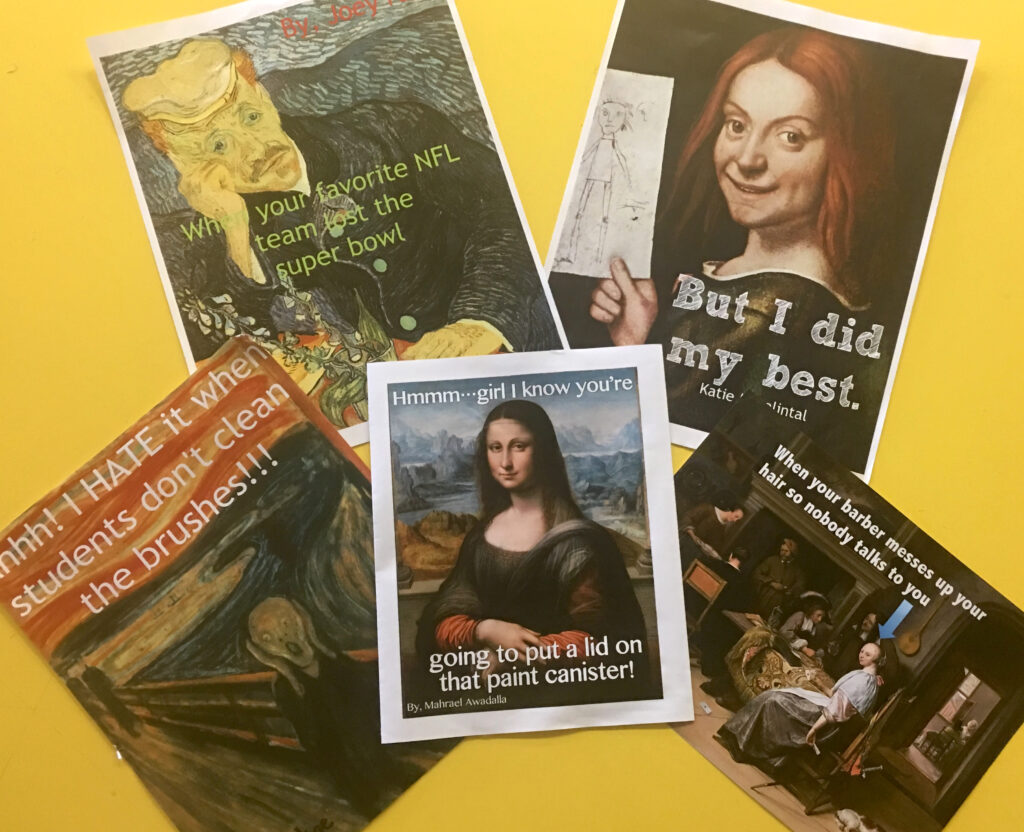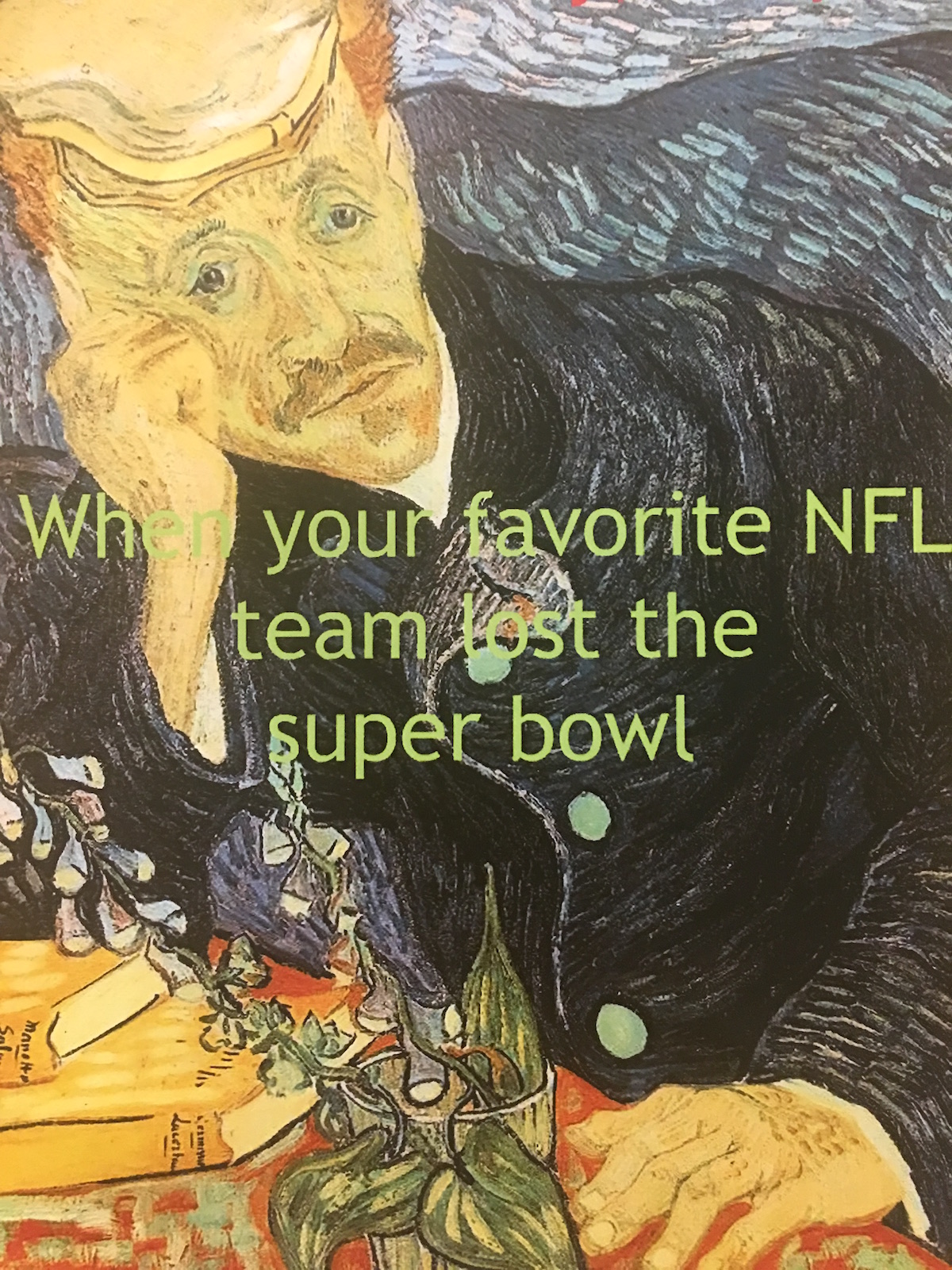Memes, your students know and love them. They are an instant form of communication that has gained popularity with the rise of technology. Last year, we talked about some ways to bring memes into the classroom.
Today, I’d like to share a fun meme project to kick off the year.
This digital art project is quick, easy, makes an engaging and popular display, and most importantly, has a lasting effect on the students who create it. It’s called “Meaningful Memes.”
Here’s how to do it.

1. Have students choose a famous work of art they connect with.
Students will research this piece of art, focusing on the details and the context of the piece. When was it painted and was it de rigueur for its time? What does the painting depict? Who is featured? What were the motivations for making it? Have them take notes or even write a short synopsis.
2. Have students think about how the art makes them feel.
Ask them to think about the color palette, the mood, and what’s depicted. What emotions does it evoke? Does it feel alive and upbeat or solemn and still?
3. Have students connect these emotions to their own life.
This allows students to connect with a piece that might be hard for them to connect with otherwise. Emotions trump time, place, and almost everything else that can act as a barrier to understanding. This also establishes a tie between personal experience and the act of appreciating a new piece of art. I find students are far more apt to remember the details of a piece when they can connect it to their own experience.
4. Then, have students create a meme that brings the two ideas together.
Challenge students to create a modern meme using the piece of art as the image and text which reflects their own experience. Students can make modern meanings and connections with art from any period.
Memegenerator.net and the Mematic app are both great places to start. (Beware that Meme Generator shows user-created content that is sometimes not school appropriate.) If you prefer a more open-ended meme making experience, any poster making app with a text feature will do. Even Powerpoint or Photoshop can bring a meme to life!
The Results
After doing this project, you’ll find students process the work on a new level. It’s a great way to make historical pieces relevant to students today. For example, in Van Gogh’s melancholic Portrait of Dr. Gachet one student learned of Van Gogh’s struggle with depression and his unfavorable opinion of the doctor when he painted the portrait. So, the student added a funny line of text about something that would depress him personally. I doubt he will forget the details of the portrait after making this meme because he made it personal. It’s a way to benefit from the current “Me” culture and get students to reflect and learn about the past.

Employing humor in your examples can also really get kids excited about this. Research shows humor aids in retention. Teacher and blogger Sarah Henderson notes, “Neuroscience research reveals that humor systematically activates the brain’s dopamine reward system, and cognitive studies show that dopamine is important for both goal-oriented motivation and long-term memory, while educational research indicates that correctly-used humor can be an effective intervention to improve retention in students from kindergarten through college.” In other words, humor can be a powerful catalyst for learning. So, encourage students to tap into their funny bones and ignite their sense of wonder.
This project is always a hit – students want to take the work home before I’ve even hung it up! You’ll find it also gets a lot of attention in the hallway. Including a short write-up beneath each meme helps to educate the audience as they pass by. This year, consider giving memes a try in your art room!
Do you use memes in your art room?
Have you done any successful projects with memes? If so, please share!
Magazine articles and podcasts are opinions of professional education contributors and do not necessarily represent the position of the Art of Education University (AOEU) or its academic offerings. Contributors use terms in the way they are most often talked about in the scope of their educational experiences.





